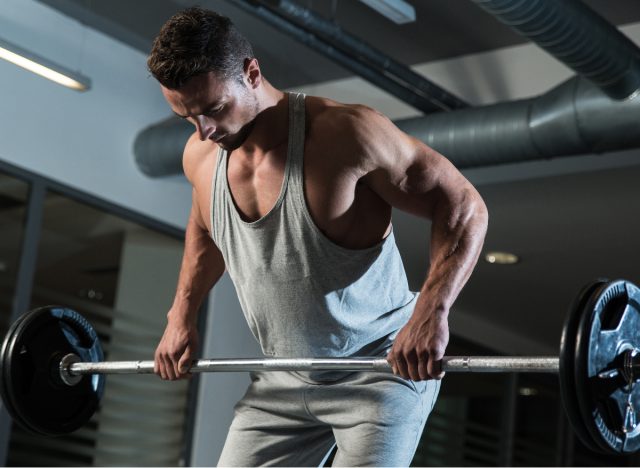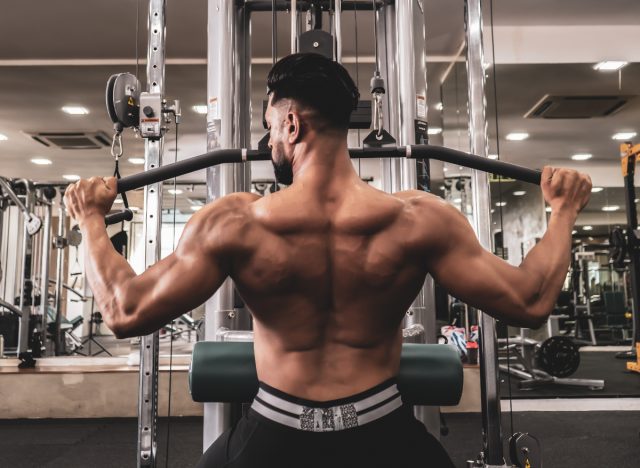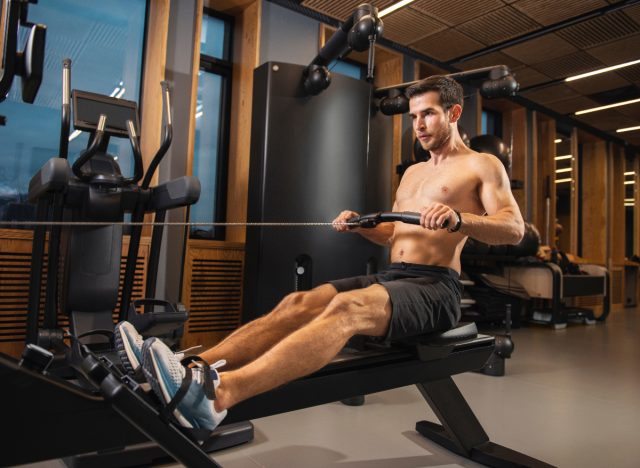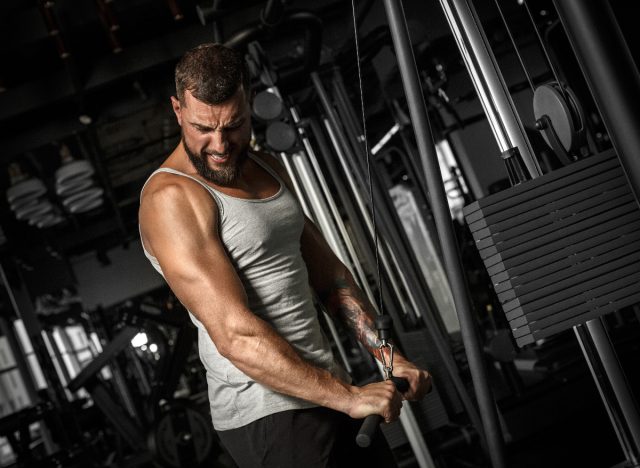If you’ve ever seen a bodybuilder from the back, you probably notice a substantial amount of width at the shoulders compared to the waist. An impressive back physique is not just about burning fat, you need to build muscle to get the classic “V-taper back” appearance that turns heads. Even if you never plan to step on a bodybuilding stage, building up your lats and developing your own V-taper will go a long way toward giving you a much more impressive physique. We curated the ultimate lat workout to get a V-taper back, so get excited.
The most important thing in the V-taper look is developing your latissimus dorsi. These muscles are responsible for shoulder adduction and extension. They activate when you pull things from “above you” downward, whether you bend your elbows such as during a pull-up or keep them straight such as a straight-arm lat pulldown, and also when you pull things “toward you,” such as during rowing movements.
You don’t need a ton of different exercises to grow your lats. In fact, including three to four lat-focused exercises in your workouts twice per week will lead to substantial improvements in your size and V-taper. You do need to lift reasonably heavy and perform eight to 12 repetitions on each set for maximal muscle hypertrophy (growth).
The following are our top four lat-muscle-building exercises for an impressive V-taper back. Perform three to four sets of each exercise for eight to 12 repetitions once or twice weekly as part of your overall lifting routine. Keep reading to learn all about this lat workout for a V-taper back, and next, don’t miss 5 Exercises Men Should Do Every Day to Stay Fit.


Wide-grip pull-ups are the classic lat-building exercise. From muscle beach to your local park, you can see people building their lats through wide-grip pull-ups. They also hit your teres major, rhomboids, and trapezius muscles which contribute to your back’s thickness and definition.
To perform wide-grip pull-ups, find a sturdy pull-up bar and grasp it with an overhand grip, hands wider than shoulder-width apart. Hang onto the bar, fully extending your arms and feeling a stretch in your rear-armpit area. Engage your core, and initiate the pull-up by pulling your shoulder blades down and back. Pull yourself up until your chest hits the bar. Keep your elbows out to the side, and drive them “downwards” to really activate your lats. Lower yourself back down to the starting position, fully extending your arms until you feel the stretch again. Repeat for the target repetitions.


Bent-over barbell rows allow you to hit your lats with some serious weight. Focus on the “squeeze” in your armpit area and shoulder blades to make sure you activate your lats. Avoid shrugging or rounding your shoulders during the movement. Along with your lats and back muscles, these also hit your posterior shoulder muscles, adding to a nice 3D appearance in your upper back. Using an overhand grip rather than an underhand grip will put more emphasis on the lats, although both variations are good.
To perform bent-over barbell rows, stand with your feet shoulder-width apart, and hold a barbell with an overhand grip, hands slightly wider than shoulder-width apart. Bend your knees slightly and hinge at the hips, maintaining a neutral spine with a braced core and keeping your chest from falling forward. Lower the barbell toward the ground, keeping it close to your shins. Pull the barbell toward your sternum by retracting your shoulder blades and bending your elbows. Lower the barbell back to the starting position, maintaining control throughout the movement. Repeat for the target repetitions.
READ RELATED: 9 Strength Exercises You Need To Do Regularly in Your 50s To Stay Fit


Next up in this workout for a V-taper back is the lat pulldown. Although they are less “functional” than free-weight movements due to the fixed range of motion, do not underestimate the power of lat pulldowns for building an impressive back. Lat pulldowns allow you to isolate the lats, teres major, posterior deltoids, and biceps. This exercise allows you to get some extra volume even if you are too tired to crank out another set of pull-ups.
To perform lat pulldowns, sit at a lat pulldown machine with your thighs secured under the pads and feet flat on the floor. Grasp the bar with a wide overhand grip, hands wider than shoulder-width apart. With a slight arch in your lower back and your chest up, initiate the movement by pulling your shoulder blades down and back. Pull the bar down to your upper chest, keeping your elbows out to the sides. Slowly return the bar to the starting position, allowing your arms to fully extend. Repeat for the target repetitions.


Similar in concept to lat pulldowns with regard to using a machine exercise for extra volume, seated cable rows target the lats and other back muscles, helping to build the V-taper appearance and also giving a thick, well-rounded torso—thick in all the right places. Again, to really blast the lats, use an overhand grip.
To perform seated cable rows, sit at a cable row machine with your feet on the footplate or floor, depending on the machine, and your knees slightly bent. Grasp the handle with an overhand grip, keeping your arms extended and shoulders down. Engage your core and pull the handle toward your lower chest by retracting your shoulder blades and bending your elbows. Pause briefly at the end of the movement, then slowly return to the starting position, maintaining control throughout the movement. Repeat for the target repetitions.


This workout for a V-taper back wraps up with the straight-arm lat pulldown. Think of straight arm lat pulldowns as the “bicep curl” isolation equivalent for the latissimus dorsi, meaning they completely isolate the lats and remove most other muscles from the equation, minus the isometric stabilization you need to hold the position. You can use a standard lat pulldown setup, but instead of sitting, stand in front of the machine.
To perform straight-arm lat pulldowns, stand facing a cable machine with a straight bar attached to the high pulley. Grasp the bar with an overhand grip, hands shoulder-width apart or slightly wider. Position yourself a step or two away from the machine with a slight bend in your knees, and hinge slightly at the hips. With a straight or slightly bent arm, engage your lats and pull the bar down toward your thighs while keeping your elbows locked in position. Pause briefly at the bottom of the movement with the bar near your thighs. Slowly return the bar to the starting position, maintaining control throughout the movement and keeping your arms extended. Repeat for the target repetitions.
Source:








